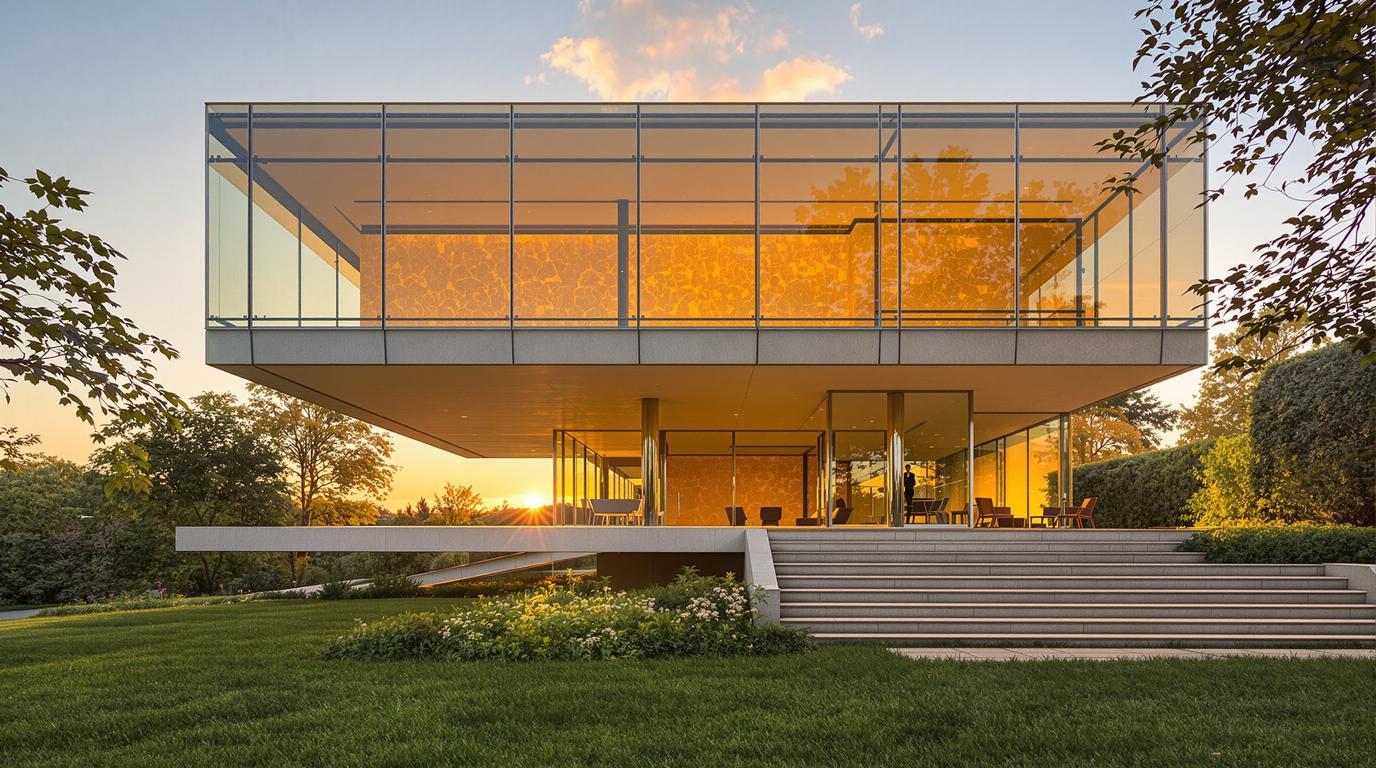The Czech Republic’s Masterpiece: Inside Villa Tugendhat, Where Modernism Found Its Soul
A glass palace that changed architecture forever
In the quiet hills of Brno sits a revolutionary structure that forever altered how we think about living spaces. Villa Tugendhat, completed in 1930, wasn’t just another wealthy family’s home—it was architect Ludwig Mies van der Rohe’s radical experiment in creating a home without walls, where space flows like water and light pours in from every direction.
Unlike its ornate European contemporaries, this UNESCO World Heritage site stripped away decoration in favor of truth: truth in materials, truth in construction, truth in living. Its revolutionary open floor plan seems commonplace today, but in post-World War I Europe, it was architectural blasphemy.
An onyx wall that changes color with the sun
The villa’s most breathtaking feature is its massive onyx wall that transforms throughout the day. When morning light strikes its honey-colored surface, the entire wall glows amber, creating a warm atmosphere that feels almost supernatural.
“When I first saw the onyx wall illuminated at sunrise, I understood why this house transcends mere architecture. It’s a living, breathing canvas that captures light like nothing I’ve experienced,” explains Dr. Ivana Černá, Brno architectural historian.
This semi-precious stone wall cost as much as an entire house at the time. The Tugendhats, Jewish industrialists who commissioned the villa, spared no expense in creating their dream home—only to enjoy it for a mere eight years before fleeing Nazi persecution.
A tragic history written in steel and glass
The villa’s story mirrors Europe’s turbulent 20th century. After the Tugendhats fled in 1938, the Gestapo seized the property. Later, Soviet forces used it as quarters, with horses reportedly stabled in its elegant living room. By the time Czechoslovakia’s communist government took control, the architectural masterpiece had become a children’s rehabilitation center.
It wasn’t until after the Velvet Revolution that Villa Tugendhat received the recognition and restoration it deserved. Today, its perfect proportions and innovative design have been meticulously restored, offering visitors a glimpse of what modern living could aspire to be.
Where to find the perfect photograph
For photographers, the villa presents endless possibilities. The morning light streaming through floor-to-ceiling windows creates dramatic shadows across the cross-hatched marble floors. The curved Macassar ebony wall separating the dining area creates elegant lines that draw the eye naturally through the space.
The most spectacular shot comes from the garden looking back at the villa, where its cantilever design appears to defy gravity. This angle showcases why Villa Tugendhat remains as revolutionary today as when it was built nearly a century ago.
Beyond the obvious: hidden details worth seeking
While most visitors marvel at the villa’s grand spaces, the true genius lies in details often overlooked. The chrome-clad columns, precisely spaced throughout the living areas, aren’t just structural—they’re slender enough to nearly disappear, creating the illusion of a floating ceiling.
“Mies designed even the air conditioning system with aesthetic consideration. The villa had mechanically operated windows that could disappear completely into the floor—an engineering feat that modern architects still struggle to replicate,” notes Martin Novák, restoration specialist.
Look for the original furniture Mies designed specifically for the villa—including the iconic Tugendhat chair, whose graceful curves contrast with the home’s strict geometric lines.
The practical details you need to know
Visiting requires advance planning—tickets sell out months ahead, especially during summer. Tours run Tuesday through Sunday, with English-language options available. At approximately $15 per person, it’s astonishingly affordable for a World Heritage experience.
Consider combining your visit with Brno’s other architectural gems, including the functionalist Avion Hotel and the medieval Špilberk Castle. The city itself offers a less touristy alternative to Prague, with excellent coffee culture and surprisingly affordable accommodations.
A lesson in living with less
Standing in Villa Tugendhat’s main living space—a vast, open area divided only by furniture arrangements and that magnificent onyx wall—visitors often experience a profound sense of calm. There’s a lesson here for our cluttered modern lives: when every element serves both function and beauty, we need far less than we think.
Unlike today’s luxury homes that often feel like museums, Villa Tugendhat was designed for actual living—its spaces flow together naturally, encouraging both conversation and contemplation.
Perhaps the villa’s greatest achievement is creating grandeur through simplicity rather than excess—a revolutionary concept in the 1930s that feels even more relevant in today’s world of sensory overload and environmental concerns.
In its quiet elegance, Villa Tugendhat doesn’t just represent the past—it offers a blueprint for a more thoughtful future where beauty and purpose unite in perfect harmony.
